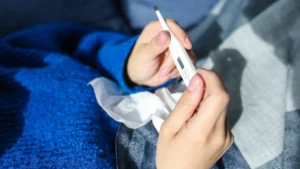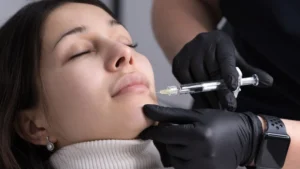Rheumatoid arthritis is a chronic autoimmune disorder that affects millions worldwide. Its significance lies in the substantial impact it has on daily lives – causing joint pain, stiffness, and reduced mobility. Today, we’re diving deep into a topic that holds the potential to transform lives and bring hope to millions: “How to Cure Rheumatoid Arthritis Permanently.”
If you or a loved one have experienced the relentless pain, stiffness, and fatigue that accompany this autoimmune condition, you know how it can cast a shadow over daily life. But fear not, because in this exploration, we’ll embark on a journey through the latest research, holistic approaches, and lifestyle changes that offer the promise of lasting relief.
From understanding the root causes to unveiling potential solutions, we’re about to unravel the layers of this complex condition and arm ourselves with the knowledge to take control of our health. So, let’s set forth on this enlightening path toward a life free from the grip of rheumatoid arthritis.
Understanding the Causes of Rheumatoid Arthritis
Rheumatoid arthritis (RA) results from an overactive immune system, which mistakenly attacks healthy joint tissues.
This chronic inflammatory condition primarily targets synovium, the lining of joints. Genetic factors play a role, making some individuals more susceptible.
Environmental triggers, such as infections or smoking, can activate RA in those with a predisposition.
Role of the Immune System
The immune system’s primary role is to defend against infections. However, in RA, it goes awry. Immune cells, particularly T cells, invade synovium, releasing chemicals that cause inflammation. This inflammation damages cartilage and bone over time.
Read More: What are the 5 Types of Psoriatic Arthritis?
Genetic Predisposition
Certain genetic markers, like HLA-DRB1 genes, increase susceptibility to RA. A family history of autoimmune diseases also raises the risk.
Environmental Triggers
Exposure to certain infections, like the Epstein-Barr virus, and lifestyle factors like smoking, can trigger RA in genetically susceptible individuals.
Inflammation and Joint Damage
Persistent inflammation leads to joint damage. Inflamed synovium releases enzymes that break down surrounding tissues, causing pain and deformities.
How to Cure Rheumatoid Arthritis Permanently
Rheumatoid arthritis (RA) doesn’t have a definitive cure, but a comprehensive approach involving medical treatments, physical therapy, and lifestyle changes can significantly manage symptoms and improve quality of life.
Effectively managing rheumatoid arthritis (RA) often involves a range of medications and medical interventions tailored to each individual’s needs.
Disease-Modifying Antirheumatic Drugs (DMARDs)
Purpose: DMARDs are designed to slow down the progression of RA by suppressing the overactive immune response.
Action: These medications target the underlying inflammation that damages joints and surrounding tissues.
Types: DMARDs include traditional synthetic DMARDs (like methotrexate) and biologic DMARDs (such as etanercept), which are derived from living cells.
Biologic Response Modifiers
Purpose: Biologics are a subset of DMARDs that specifically target certain immune molecules involved in RA.
Action: By blocking specific inflammatory pathways, biologics help control immune system responses responsible for joint damage.
Administration: Administered through injection or infusion, biologics require a healthcare professional’s guidance.
Read More: Psoriatic Arthritis Hip Pain Relief: Causes, Treatment, and Prevention
Pain Relievers and Anti-Inflammatory Drugs
Purpose: Non-Steroidal Anti-Inflammatory Drugs (NSAIDs) and pain relievers alleviate pain and reduce inflammation temporarily.
Action: NSAIDs hinder the production of chemicals causing pain and swelling.
Use: These medications offer symptomatic relief and are often used alongside other RA treatments.
Corticosteroids
Purpose: Corticosteroids are potent anti-inflammatory medications that provide swift relief during RA flares.
Action: They suppress the immune system and inflammation, effectively reducing pain and swelling.
Administration: Corticosteroids can be taken orally, injected into joints, or delivered through intravenous infusion.

Combination Therapies
Purpose: Some patients benefit from combining different types of medications to enhance their effectiveness.
Action: Combination therapies often target RA from multiple angles, providing more comprehensive control over symptoms and inflammation.
Physical Therapy and Exercise
Physical therapy and exercise play a crucial role in managing rheumatoid arthritis (RA), helping maintain joint flexibility, strengthen muscles, and improve overall mobility.
Joint Mobility and Strength
Importance: Physical therapists design exercises to preserve joint function and enhance muscle strength, supporting stability and movement.
Types: Range-of-motion exercises involve moving joints through their full capacity, preserving flexibility. Strengthening exercises target muscles around joints, aiding their protection.
Guidance: A physical therapist tailors exercises to individual abilities and monitors progress.
Range-of-Motion Activities
Purpose: Range-of-motion activities prevent stiffness, promoting comfortable joint movement.
Examples: Gentle stretches, shoulder rotations, and ankle circles maintain joint flexibility.
Frequency: Performing these activities daily or as recommended by a physical therapist is beneficial.

Aerobic Exercises
Benefits: Low-impact aerobic exercises, like walking, swimming, or cycling, enhance cardiovascular health without excessive strain on joints.
Impact: Aerobic activities improve endurance, and overall fitness, and can contribute to weight management.
Considerations: Starting slowly and gradually increasing intensity minimizes the risk of injury.
Pain Management Strategies
Warm-Up: Gentle movements and warm compresses before exercise can reduce joint stiffness.
Cool Down: Gentle stretches and controlled breathing after exercise help relax muscles and prevent soreness.
Moderation: Finding the right balance between activity and rest prevents overexertion.
Collaboration with Physical Therapist
Assessment: A physical therapist assesses your condition and designs a personalized exercise program.
Monitoring Progress: Regular follow-ups allow adjustments to the exercise routine based on your progress and any changes in your RA symptoms.
Safety: A physical therapist ensures exercises are performed correctly to avoid strain or injury.
Alternative and Complementary Therapies
In addition to conventional treatments, alternative and complementary therapies can be considered to complement the management of rheumatoid arthritis (RA), offering potential relief and enhancing overall well-being.
Acupuncture
Application: Acupuncture involves inserting fine needles into specific points on the body.
Purpose: It may help reduce pain by stimulating nerves and releasing natural pain-relieving chemicals.
Caution: While generally safe, consult a healthcare provider before pursuing acupuncture.
Herbal Remedies
Usage: Some herbs, like turmeric and ginger, are believed to possess anti-inflammatory properties.
Effectiveness: Scientific evidence regarding their efficacy is limited, but they might offer mild relief for some individuals.
Safety: Consult a healthcare professional before using herbal remedies, especially if taking other medications.
Mindfulness and Meditation
Practice: Mindfulness and meditation techniques focus on relaxation, deep breathing, and mental calmness.
Benefits: These practices can improve mental well-being, potentially reducing stress-related exacerbation of RA symptoms.
Integration: Mindfulness can be easily integrated into daily routines to promote emotional balance.
Dietary Supplements
Consideration: Some supplements like omega-3 fatty acids and vitamin D are associated with anti-inflammatory effects.
Consultation: Consult a healthcare provider before taking supplements to ensure they don’t interfere with other medications.
Heat and Cold Therapy
Application: Applying heat (warm showers, heating pads) or cold (ice packs) to affected joints can help reduce pain and inflammation.
Use: Alternating between hot and cold therapies can provide relief during RA flares.
Collaboration with Healthcare Professionals
Guidance: Consult with your rheumatologist or primary care provider before trying alternative therapies.
Complementing: Alternative therapies should not replace conventional treatments but rather complement them.
Monitoring: Keep healthcare providers informed about any alternative therapies you are using to ensure they align with your overall treatment plan.
Conclusion
In the journey to manage rheumatoid arthritis (RA), a multifaceted approach emerges as a key strategy.
While a permanent cure remains elusive, combining medical treatments, physical therapy, and lifestyle modifications can substantially alleviate symptoms and enhance the quality of life.
Medications like DMARDs and biologics target the immune system’s overactivity, impeding the progression of joint damage.
Physical therapy and exercise maintain joint flexibility and muscle strength, while alternative therapies like acupuncture and mindfulness offer potential relief.
Collaborating with healthcare professionals ensures a tailored plan, empowering individuals to actively manage their condition.
Remember, understanding and managing RA is a continuous effort, but by embracing these strategies, you can take charge of your health and live a more comfortable life.
Frequently Asked Questions (FAQs)
What is rheumatoid arthritis (RA)?
RA is a chronic autoimmune disease that primarily affects joints, causing inflammation, pain, and potential joint damage.
Can RA be permanently cured?
No, there is currently no definitive cure for RA. However, a combination of treatments and lifestyle changes can effectively manage the condition and improve quality of life.
What are DMARDs?
DMARDs (Disease-Modifying Antirheumatic Drugs) are medications that target the immune system’s abnormal activity, slowing down the progression of RA and reducing inflammation.
How do biologic response modifiers work?
Biologics target specific immune molecules involved in RA, effectively controlling inflammation and minimizing joint damage.
What role does exercise play in managing RA?
Regular exercise, especially range-of-motion and strengthening exercises, helps maintain joint flexibility, strengthen muscles, and improve overall mobility.
Are alternative therapies like acupuncture effective for RA?
While scientific evidence is limited, some individuals with RA report relief from symptoms through alternative therapies like acupuncture. Consult your healthcare provider before trying any alternative treatments.
Can dietary changes help manage RA?
A balanced, anti-inflammatory diet rich in fruits, vegetables, and omega-3 fatty acids can contribute to managing RA symptoms and overall well-being.
What should I consider before using herbal remedies?
Consult your healthcare provider before using herbal remedies, as they may interact with other medications or have potential side effects.
Is it safe to combine alternative therapies with conventional treatments?
It’s important to consult your healthcare provider before combining alternative therapies with conventional treatments to ensure compatibility and safety.
Medical References
- Scott, D. L., Wolfe, F., & Huizinga, T. W. (2010). Rheumatoid arthritis. The Lancet, 376(9746), 1094-1108.
- Smolen, J. S., Landewé, R., Bijlsma, J., Burmester, G., Chatzidionysiou, K., Dougados, M., … & van der Heijde, D. (2020). EULAR recommendations for the management of rheumatoid arthritis with synthetic and biological disease-modifying antirheumatic drugs: 2019 update. Annals of the Rheumatic Diseases, 79(6), 685-699.
- Lee, Y. H., Bae, S. C., & Song, G. G. (2018). Omega-3 polyunsaturated fatty acids and the treatment of rheumatoid arthritis: a meta-analysis. Archives of Medical Research, 49(2), 79-87.
- Lee, M. S., Pittler, M. H., Shin, B. C., & Ernst, E. (2007). Acupuncture for rheumatoid arthritis: a systematic review. Rheumatology, 46(3), 384-390.
- Strangfeld, A., Eveslage, M., Schneider, M., Bergerhausen, H. J., Klopsch, T., Zink, A., … & Listing, J. (2020). Treatment benefit or survival of the fittest: what drives the time-dependent decrease in serious infection rates under TNF inhibition and what does this imply for the individual patient?. Annals of the Rheumatic Diseases, 79(1), 85-90.
- National Center for Complementary and Integrative Health. (2021). Rheumatoid Arthritis and Complementary Health Approaches. Retrieved from https://www.nccih.nih.gov/health/providers/digest/rheumatoid-arthritis-complementary-health.



